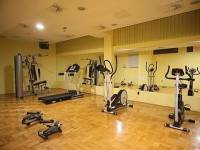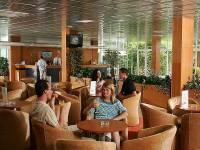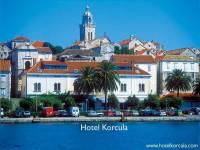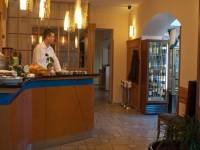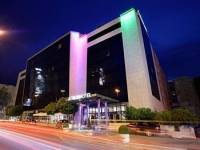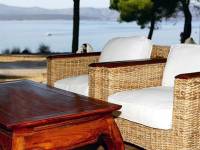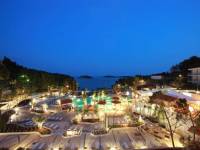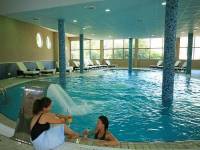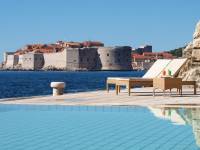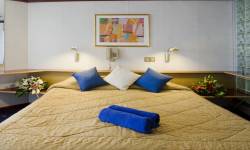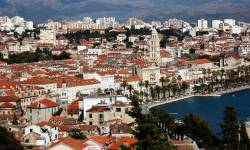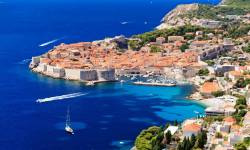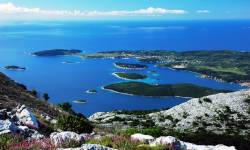-
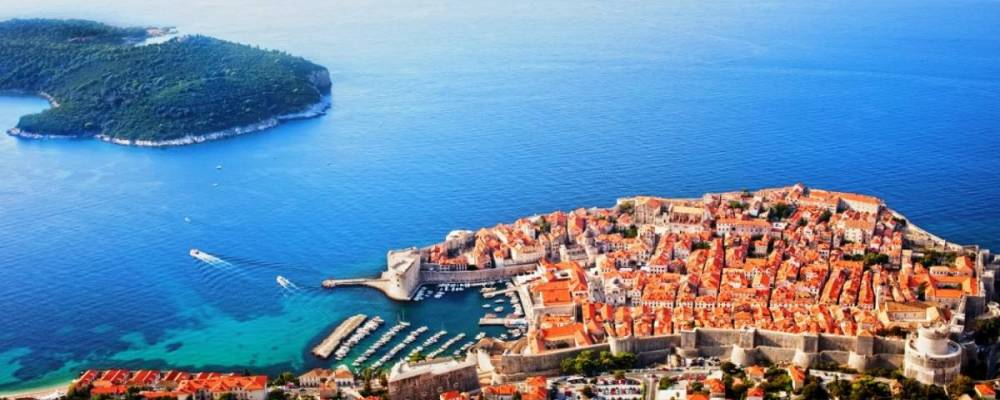
Dubrovnik, Croatia
Croatia  Independent Holidays
Independent Holidays  Split
Split
 10 Day Southern Dalmatian Hopper
10 Day Southern Dalmatian Hopper
|
|
|||||||||||||||||||
The tour starts in the magnificent town of Split with its numerous archeological, historical and cultural sites that you will explore in depth with your local licensed tour guide. From Split we will venture south to Bol on the island of Brac, where we will visit the famous “Zlatni Rat” beach known as the “Golden Horn” is reputed to be the most beautiful in the Adriatic.
Tour Includes
- Accommodation in select hotels as per itinerary
- All arrival and departure transfers
- All hotel taxes and service charges
- Breakfast daily
- Ferry Tickets
Tour Does Not Include
- All personal expenses at hotels
- Gratuities of any type
- Insurance of any type
- International fights
|
||||||||||||||||||||||||||||||||||||||||||||||||||||||||||||||||||||||||||
Country
Travelling through any of Croatia’s regions offers immense and rich experiences to every visitor. From the coastal to the continental parts, Croatia’s rich cultural heritage combined with its magnificent natural beauties make it the perfect place to spend your vacation. The capital of Croatia is Zagreb, a charming medieval city of exceptional beauty known for its spirit and architecture, with a population of approximately 1 million. The city with a tradition of almost one thousand years celebrated in 1994 its 900th birthday. Over the years, Zagreb has become the scientific, political and economic center of Croatia.
The uniqueness of Croatia lies in its diversity. Situated between the Alps and the Adriatic Sea, Croatia provides visitors with the opportunity to ski in the winter and swim during the summer months, all within driving distance. With its 1.185 islands, islets and reefs, it is the most diverse coast on the Mediterranean. There are seven national parks in Croatia, three being in the mountainous regions (Risnjak, Paklenica and Plitvička Jezera), and four in the coastal regions (Kornati, Brijuni, Krka and Mljet).
To mention a few, Croatia is home to the Old City of Dubrovnik, Diocletians Palace in Split, Euphrasies Basilica in Poreč, the lakes Plitvička Jezera and many others. Croatia boasts the largest number of developed settlements in southeast Europe, in addition, many of which date back to Roman and medieval times. Rarely can you find so many examples of cultural and historical significance from different periods in such a small region.
City
Split is the second largest city in Croatia, and the regional capital of Dalmatia, built inside and around the historical Diocletian's Palace from the third century, included in the UNESCO world heritage list. Many of Split's historical and cultural monuments are located within the walls of Diocletian's Palace. One of them is Peristile, the main open space in the palace with its colonnade of six columns and the cathedral on eastern side.
Split has its own airport that connects it with Zagreb, as well as other international cities. Various ferry lines connect Split with the nearby Adriatic islands and there is a coastal ferry service between the city and Rijeka to the north and Dubrovnik to the south. There are also daily ferries during the summer that connects Split and Ancona in Italy.
George Bernard Shaw described the city of Dubrovnik as "the pearl of the Adriatic" and said wrote home saying ""those who seek paradise on Earth should come to Dubrovnik," and it is true that many who have visited this sea-side crown jewel have remained both enchanted and amazed with the coastal beauty found here and the charm of the old town, which became a UNESCO World Heritage site in 1979.
District

Bol is town on the south coast of the Island of Brac, popular Croatian holiday destination.
The biggest atraction in Bol is beach Zlatni rat (Golden Cape), pebble beach that streches itself 500 meters into the sea and changes direction of its top influenced with strong sea currents. In Bol and surrounding area, you will find many other beaches, as well as private coves.
Island of Brac is characterized by very favorable climate, mild, mostly moist winters and dry, hot and sunny summers. Local and seasonal winds also help maintain favorable climate. Local wind from the west makes life easier in hot summer days, and makes Bol a paradise for surfers.
Bol offers possibilities for active vacation (scuba diving, windsurfing, biking, tennis), relaxing (welness centers), interesting landscapes and sightseeing (Blaca, Dragon Cave, excursions).
Island
Island Of Korcula it's one of the greenest islands in the Adriatic sea. It is also one of the most popular travel destinations in this part of Croatia. Like most of the Croatian islands, the Greeks, who gave it the name Korkyra Melaina or 'Black Corfu' for its dark and densely wooded appearance, first settled Korcula. The island itself is rich in art and culture, as well as beautiful nature such as numerous tiny and secluded beaches and bays, small and uninhabited islands and breathtaking views. The main town on the island is also named Korcula. Korcula Town is a typical medieval walled Dalmatian city, with its round defensive towers and cluster of red-roofed houses.
Marco Polo (1254 - 1324) the famous world-traveller and writer, as well as a Venetian merchant, is reputed to have been born in Korcula.In the old town of Korcula where his supposed house of birth is located. It will shortly be turned into a Museum of Marco Polo. Besides Marco Polo, Korcula has a long art and cultural tradition, including museums, galleries and festivals.
The sword dance Moreska, is world famous folk drama / dance, which used to be played all over Mediterranean. it is now only performed in Korcula.
Korcula has a lot to offer to a visitor to see and learn - its art and history, its culture, traditional crafts and skills of stone masonry and shipbuilding, sword dances, music, writings as well as its most famous inhabitant – Marco Polo and his heritage, besides all the natural beauties, views and beaches. Korcula's nearest airport is Dubrovnik Airport. Korcula is fairly easily accessible from the Croatian mainland by various ferries. Welcome to Korcula :-)
Other
The centre of the sunniest Croatian island of the same name - Hvar is a unique blend of luxurious Mediterranean natural surroundings, layer upon layer of a rich cultural and historical heritage and sophisticated tourism. Located in picturesque natural surroundings on the south side of the island, surrounded by mighty medieval walls, magical fields and the scent of lavender, Hvar is a never-ending treasure of monumental heritage, culture and atmospheres.
Its name originates from the word PHAROS - the Greek name for the island of Hvar and the town which was formerly in the place of the present Stari Grad (the Old Town) from which it took over the title as island centre in the 13th century. From its castle Španjol, high above the town, majestic views open up over the green Pakleni otoci (the Hell Islands) (ACI Marina Palmižana) and the open sea. The main city square in front of the cathedral by the Arsenal and the oldest European theatre from the 17th century are a favorite gathering place for tourists. Many museums hide valuable works of art (The Last Supper from the 15th century in the dining room of the Franciscan Monastery) and the Benedictine Monastery, famous for its lace making from agave fibres, is often visited.
| Please contact us today by either phone or email for pricing and we will be happy to assist you in achieving the best possible pricing for this package! | |
| Email : | info@landofthegods.com |
| Phone : | +1-866-924-8259 |
|
|||||||||||||||||||||||||||||||||||||||||||||||||||||||||||||
| CURRENCY : |
| Standard | Pricing From : CAD 1,422.00 |
| Superior | Pricing From : CAD 1,820.00 |









